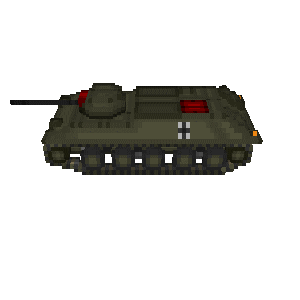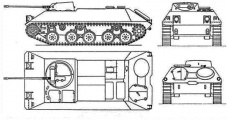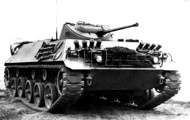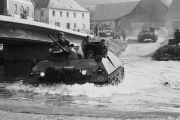Difference between revisions of "Schützenpanzer HS.30"
From D-day: wiki
m |
m |
||
| (One intermediate revision by the same user not shown) | |||
| Line 20: | Line 20: | ||
|content= | |content= | ||
| + | The Schützenpanzer HS.30 was a infantry fighting vehicle developed by the Swiss company Hispano-Suiza for the Bundeswehr in the 1950's. It was the first armoured vehicle to be developed for Germany after World War II. Unlike other armoured personnel carriers that were in use at the time the HS.30 was fitted with a turret equipped with a 20mm auto-cannon. This gave it the ability to engage enemy infantry and unarmoured targets, making it arguably the worlds first infantry fighting vehicle. The HS.30 was authorised for production before a prototype was ready and tested. This meant that early production versions suffered from many problems, especially with the engine and transmission which were originally designed for a lighter vehicle. This rush into production along with an inordinate order of 10,000 vehicles (much more than what was required) raised some suspicions. An investigation revealed that personnel associated with the procurement process and several politicians had received in total over 50 million Deutschmarks in bribes for their support of the HS.30, creating a scandal within the German government. Eventually the early problems with the HS.30 were worked out and the order reduced with only 2,176 being built between 1958-1971. | ||
| + | |||
==References== | ==References== | ||
Latest revision as of 15:47, 19 March 2017
| ||||||||||||||||||||||||||||||||
History
The Schützenpanzer HS.30 was a infantry fighting vehicle developed by the Swiss company Hispano-Suiza for the Bundeswehr in the 1950's. It was the first armoured vehicle to be developed for Germany after World War II. Unlike other armoured personnel carriers that were in use at the time the HS.30 was fitted with a turret equipped with a 20mm auto-cannon. This gave it the ability to engage enemy infantry and unarmoured targets, making it arguably the worlds first infantry fighting vehicle. The HS.30 was authorised for production before a prototype was ready and tested. This meant that early production versions suffered from many problems, especially with the engine and transmission which were originally designed for a lighter vehicle. This rush into production along with an inordinate order of 10,000 vehicles (much more than what was required) raised some suspicions. An investigation revealed that personnel associated with the procurement process and several politicians had received in total over 50 million Deutschmarks in bribes for their support of the HS.30, creating a scandal within the German government. Eventually the early problems with the HS.30 were worked out and the order reduced with only 2,176 being built between 1958-1971.
References
. . . .
Time Frames
| 1930 - 1940: Pre-War |
1940 - 1942: Early-War |
1942 - 1944: Mid-War |
1944 - 1945: Late-War |
1945 - 1960: Post-War |
1930 - 1960: Total-War |
|
| Buildable | Yes | Yes | ||||
| Bonus Crate | Yes | Yes |
. . . .
Comments
. . . .






Enable comment auto-refresher